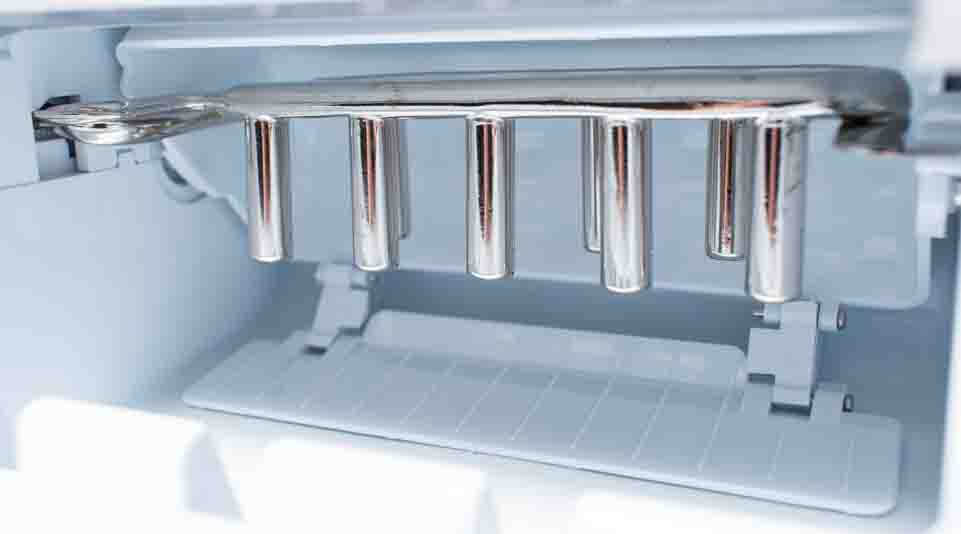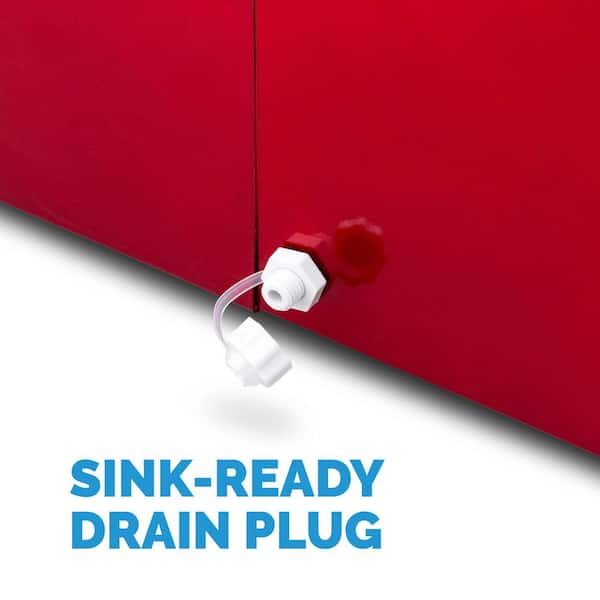How to Clean NewAir Ice Maker: Easy Steps
This post contains affiliate links. As an Amazon Associate, we earn from qualifying purchases.
That first sip of lemonade turns sour when your NewAir ice maker spits out cloudy cubes with a musty odor. You’re not alone—37% of home ice makers develop off-flavors within six months of use, often from hidden mineral scale or biofilm buildup. The good news? How to clean NewAir ice maker properly takes just 30 minutes with vinegar and a soft cloth. Skip this critical maintenance, and you’ll battle gritty ice, reduced output, and even mold growth in as little as 14 days. Follow this exact procedure to restore crisp, taste-free ice using only food-safe supplies you likely have in your kitchen.
Unplug and Drain: Critical First Steps Before Cleaning Your NewAir Ice Maker
Never skip power disconnection—this prevents electrical hazards when water contacts internal components. Immediately unplug your unit and move it to a counter near your sink. Empty every ice cube from the storage bin, then locate your model’s drain method: portable models (like the 28-lb) have a rear plug you twist counterclockwise, while nugget makers use a front pump button. Drain all reservoir water until it runs clear. Residual moisture left inside becomes a mold incubator during cleaning, so tilt the unit gently to evacuate hidden pockets.
Essential Cleaning Kit: What You Must Have
- 2 microfiber cloths (one damp for cleaning, one dry for immediate wiping)
- Soft bottle brush or sponge (never use steel wool—it scratches stainless steel)
- 1:1 vinegar-water solution (or lemon juice substitute for citrus lovers)
- Food-safe dish soap (1 drop max per cup of water)
- 70% isopropyl alcohol wipes (for touchpoints like buttons and lid handles)
- Fresh filtered water (for rinsing—tap water reintroduces minerals)
Critical warning: Bleach, ammonia, or abrasive cleaners corrode evaporator plates and leave toxic residues in your ice. Stick to these food-grade options only.
Remove and Wash Ice Basket: Eliminate Slimy Biofilm in 5 Minutes
Your NewAir’s ice basket hides the most stubborn gunk—look for pink slime or slippery film in corners where moisture pools. Lift it straight out using the side handles (no twisting), then wash under lukewarm water with a single drop of dish soap. Use your bottle brush to scrub along the bottom grid and inner seams where biofilm clings. Rinse until the water squeaks against plastic—a sure sign soap residue is gone. Never air-dry the basket upside down; water trapped in crevices breeds bacteria. Instead, stand it upright on a drying rack while you clean the interior.
Target Evaporator Fingers and Water Trough: Precision Interior Cleaning

Dampen a microfiber cloth with vinegar solution and reach deep into accessible areas:
– Wipe evaporator fingers (those thin metal rods where ice forms) in downward strokes to avoid bending
– Scrub the water trough along the unit’s base where minerals accumulate
– Swab sensor housings with cotton swabs dipped in vinegar—dust here causes false “full bin” errors
Replace your cloth immediately when it darkens—reusing dirty rags just smears grime. For tight spots like temperature sensors, fold a paper towel into a narrow point. You’ll know you’ve missed areas if white mineral flakes appear on your cloth after the first pass.
Run Descaling Cycle: Dissolve Hidden Mineral Scale with Vinegar
Fill the reservoir to the “Max” line with either:
– Standard solution: Equal parts vinegar and water (ideal for monthly cleans)
– Hard water boost: 2 parts vinegar to 1 part water (for areas over 120 ppm hardness)
Close the lid, plug in the unit, and activate the cycle:
– Portable models: Press “Power” to start a normal ice cycle
– Nugget makers: Hold “Clean” for 3 seconds until lights flash
Let it run until the reservoir empties completely—this takes 15-20 minutes. The vinegar dissolves calcium deposits inside water lines invisible to the naked eye.
Stop Thick Scale Fast: The 30-Minute Soak Trick
If your ice has been cloudy for weeks, pause the cycle halfway and let the vinegar solution soak for 30 minutes. This breaks down cement-like scale without damaging pumps. Resume the cycle afterward—never exceed 30 minutes, as prolonged acid exposure harms seals.
Rinse Thoroughly: How to Know When Cleaning Solution is Gone
Dump all vinegar residue, then refill with fresh filtered water only. Run a full ice cycle and discard every cube—this first batch still contains traces of acid. Now the critical test: taste a cube from the second cycle. If it’s neutral and crisp, you’re done. If you detect vinegar tang or cloudiness, run a third cycle. Most users miss this step, causing sour ice for days. Pro tip: shine a flashlight through cubes—true clarity means zero haze.
Sanitize Control Panel and Lid Handle: Kill Germs on High-Touch Surfaces
Your fingers transfer oils and bacteria to buttons every time you grab ice. Wipe the control panel, lid handle, and dispenser chute with alcohol wipes, applying light pressure to avoid damaging touch sensors. Immediately dry with a clean microfiber cloth—alcohol streaks on stainless steel within seconds. Pay special attention to crevices around buttons where gunk accumulates. This takes 60 seconds but prevents recurring musty smells from external contamination.
Dry Completely and Reassemble: Prevent Mold After Cleaning
This is where 80% of users fail. Leaving the lid closed traps moisture, inviting mold within 72 hours. Prop the lid open for 2 full hours—set a timer! Check for hidden dampness in the reservoir corners and under the ice basket rails with a dry cloth. Only when surfaces feel bone-dry should you reinsert the basket, close the lid, and plug in the unit. Start a test cycle immediately; running the machine evaporates any residual humidity.
Model-Specific Tips: NewAir 28-lb and Nugget Ice Maker Cleaning

NewAir 28-lb Portable:
– Vinegar descaling requires only one rinse cycle—extra rinses waste water
– Clean the rear drain plug O-ring with a vinegar-swab to prevent leaks
NewAir Nugget Models:
– Remove the chute cover by pressing the release tab
– Scrub auger flights (the spiral ice-shaping blades) with a vinegar-soaked Q-tip to clear sugary residue from flavored drinks
– Run two rinse cycles minimum due to complex internal pathways
How Often to Clean NewAir Ice Maker: Monthly Schedule & Hard Water Fixes

Standard schedule: Deep clean every 90 days for average home use. But if you spot any of these, clean immediately:
– Ice tastes metallic or smells like wet cardboard
– Cubes form slowly or stop completely
– Visible white flakes or pink slime in the reservoir
Hard water survival guide:
– Clean every 3–4 weeks if your tap exceeds 120 ppm hardness (test strips cost $5 at hardware stores)
– Always use filtered water—reverse osmosis cuts scale by 90%
– Perform a “quick rinse” weekly: dump old water, wipe the interior, and refill
Pro storage tip: Unplug the unit for vacations longer than 14 days. After cleaning, leave the lid ajar with a silica-gel packet inside to absorb moisture—never store with the bin sealed shut.
Final Note: Mastering how to clean NewAir ice maker properly means never serving tainted ice again. Stick to this vinegar-based method monthly, and you’ll extend your machine’s life by 3+ years while enjoying truly clear cubes. For persistent scale issues, consult NewAir’s official descaling solution—it’s pricier but optimized for their stainless steel components. Now grab that bottle of vinegar and reclaim your perfect ice in under half an hour.
